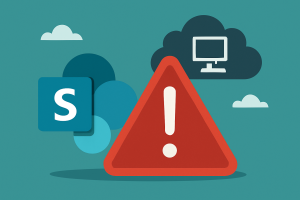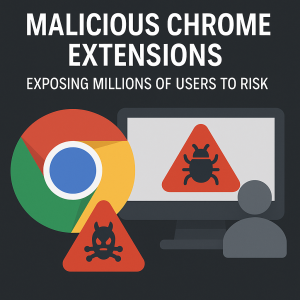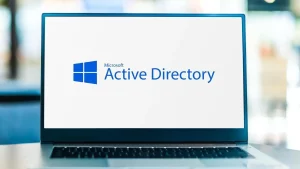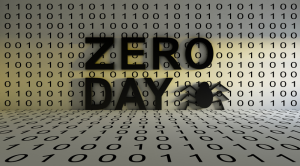
A newly uncovered breach exposes 16 billion login credentials—including Apple ID, Google, and Facebook accounts—collected by malware.
Massive 16 Billion Credential Leak Uncovered
Security researchers announced in June 2025 that around 16 billion login records have been compiled from multiple data dumps, dwarfing any previous breach on record. The trove reportedly covers “pretty much any online service imaginable,” including Apple ID, Facebook, Google, GitHub, and even government platforms. For context, this new leak far exceeds the ~3 billion accounts stolen in Yahoo’s 2013–2016 breaches (until now the largest known breach). The information was discovered in 30 different datasets that appeared briefly on the web, each containing anything from tens of millions up to 3.5 billion records. In other words, criminals now hold billions of fresh credentials, many of which overlap, making it impossible to know exactly how many unique users are affected.
How the Leak Occurred: Infostealers at Work
Researchers believe these records did not come from a single corporate hack, but rather from infostealer malware installed on users’ devices. Infostealers quietly scrape login pages and capture URL, username and password data from infected computers and phones. The stolen credentials are then aggregated into large databases. Cybernews’ analysis found that many of the exposed datasets share common formatting (URL + login + password), and they appear to be a mix of fresh data and previously known leaks. Some collections were even named after specific malware families. For example, one batch of stolen data had 3.5 billion records (mostly Portuguese-speaking victims) and most others averaged ~550 million credentials each. Because these leaks are often posted anonymously and taken down after a few days, it’s unclear who compiled them – though it’s suspected that cybercriminals collecting infostealer logs are behind the caches. The bottom line: this “breach” is really an unprecedented centralization of data already exfiltrated by malware, giving attackers a massive shortcut to launch further attacks.
Accounts Affected: Apple IDs, Google, Facebook and More
The leaked credentials span a huge range of services, from personal email and social media to business tools and cloud platforms. Notably, the logs include Apple ID login entries, but experts stress that Apple’s own systems were never breached. Instead, infostealers on users’ Macs or iPhones likely captured the Apple ID pages during login attempts. As Cybernews contributor Bob Diachenko explains, “There was no centralized data breach at any of these companies,” but “credentials we’ve seen in infostealer logs contained login URLs to Apple, Facebook, and Google login pages”. In practice, this means any service you log into on an infected device could be recorded. If you’ve ever signed into Gmail, Facebook, Amazon, GitHub, Zoom, or any site without multi-factor protection, your username and password could now be in these dumps.
The Risks: Fraud, Phishing, Account Takeovers
Such a massive collection of credentials is a cybercriminal’s gold mine. With billions of email-password pairs and tokens, attackers can mount targeted phishing, account takeover, and financial fraud campaigns. For instance:
- Credential Stuffing and Account Takeover: Criminals can try the stolen logins on other services, hoping users reused passwords. Given that around 77% of breaches involve stolen credentials, even a small success rate would compromise millions more accounts.
- Phishing and Social Engineering: Leaked personal data (names, emails, locations, etc.) can fuel convincing phishing scams. Attackers could send realistic messages to your contacts or impersonate services you trust.
- Ransomware and Business Email Compromise: Some of the exposed data comes from corporate environments (VPNs, developer tools, business platforms). Unauthorized access to business logins can enable ransomware infections or BEC attacks that cost companies millions.
- Identity Theft and Fraud: Combined with other personal info, the leaked credentials may allow fraudsters to open credit accounts, loans, or steal financial assets in victims’ names.
In short, experts warn this is “a blueprint for mass exploitation”: with 16 billion fresh credentials, attackers have “unprecedented access” to accounts worldwide. Even if only a fraction are unique, the scale makes it easy to target people en masse. The only silver lining is that the datasets were only briefly accessible to researchers, but that still provided plenty of time for many copies to spread in dark-web forums.
Protecting Yourself and Checking for Exposure
There’s no magic fix after a breach of this magnitude, but good security hygiene can greatly reduce risk. First, treat every important account as if it were compromised – start by changing passwords on any service you continue to use, and enable strong two-factor authentication (2FA) wherever possible. For example, Macworld explicitly advises that after a breach you should “change your password and enable two-factor verification” for the affected service. Use a reputable password manager to generate unique, complex passwords for each site, so that one stolen password cannot unlock all your accounts. Also, update your operating system and apps: Apple regularly releases security patches, so keep macOS and iOS up-to-date and install app updates to close known vulnerabilities.
Be extra vigilant about phishing: never click on suspicious email or text links, even if they claim to be from your bank or a service you use. Verify URLs by hovering or copying them into a text editor, and only download software from trusted sources. In particular, avoid pirated or “cracked” software and unverified repositories, as they are common vectors for infostealer malware. Stick to official app stores or the developer’s website when installing new programs. Also consider security software or built-in protections (firewalls, anti-malware) to detect or quarantine stealthy trojans.
Finally, take concrete steps to monitor and mitigate any potential identity theft. Check your credit report and consider freezing it – this prevents criminals from opening new credit accounts in your name. Review your bank and credit card statements for unauthorized activity, and enable alerts for login attempts if offered by your financial institution. Use online breach-checker tools to see if your data has surfaced. For instance, Cybernews has published a password leak checker to let you test whether your password appears in the 16-billion-record dataset, and the popular “Have I Been Pwned” site can tell you if your email was involved in any known breach.
Key Safety Steps
- Change all exposed passwords and enable 2FA immediately.
- Use strong, unique passwords (ideally managed by a password manager).
- Keep your OS and apps patched, and avoid installing untrusted software.
- Exercise caution with emails/texts: verify links and sender addresses before clicking.
- Freeze your credit report and monitor financial accounts for fraud.
- Check breach databases (HaveIBeenPwned, Cybernews) to see if you’re affected.
This unprecedented 16-billion credential leak is a stark reminder that credentials are the new perimeter. Cybercriminals are hoarding massive piles of stolen logins from infostealer malware – essentially handing them a master keyring to user accounts worldwide. Experts warn that with so many accounts potentially compromised, everyone should assume their login data might be out there and act accordingly. In practice, that means using unique passwords, enabling multi-factor authentication, and staying vigilant against phishing and suspicious activity. As one security researcher put it, this incident gives attackers “unprecedented access” to steal identities and breach more systems. By following the above best practices and regularly checking for breaches, users can dramatically lower their risk and prevent this colossal data leak from turning into a personal disaster.




